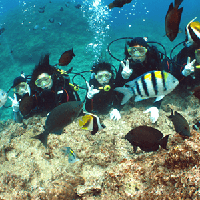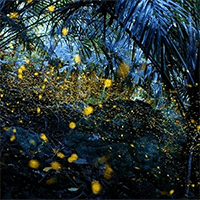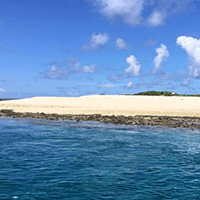Fukushima in Ticket
- Age 6~Age 99
- 2~3 hours
56th Fukushima Waraji Festival [Peach picking ticket included]Friday, August 1, 2025Saturday, August 2, 2025Friday, August 1, 18:30-21:00 (scheduled) Paid spectator seating availableNational Route 13, Shinobu-dori to Ekimae-dori Waraji Dance, Large Waraji Parade, Original Waraji ParadeSaturday, August 2, 18:30-20:00 (scheduled) Paid spectator seating availableNational Route 13, Shinobu-dori to Ekimae-dori Waraji Dance, Large Waraji Parade, Original Waraji Parade, FinaleMount Shinobu, known since ancient times for its utamakura (poem of the dead), is located in the center of Fukushima City and is best known for its three mountains: Gassan, Yudono, and Haguro. The giant straw sandals (12m long) at Haguro Shrine, one of the three Shinobu mountains (Mount Shinobu), are said to be the largest in Japan, and have been dedicated since ancient times at the Akatsuki Mairi festival every February in prayer for good walking. It is said that the origins of the giant straw sandals lie in the Niomon gate at Haguro Shrine, where straw sandals were made to fit the size of the Nio statues enshrined there. Later, people setting out on long journeys such as pilgrimages to Ise Shrine began to offer them in prayer for good walking and a safe journey. In recent years, people have also prayed for good health, bountiful harvests, safety in the home, and prosperity in business. The Akatsuki Mairi festival every February is a traditional festival that has been passed down for over 400 years since the Edo period, and giant straw sandals (currently only one foot worth) are dedicated. The Fukushima Waraji Festival originated from this "Akatsuki Mairi" and is held every year from the first Friday to Sunday in August as a festival to protect the tradition of Japan's largest straw sandals, promote local consciousness, enjoy the short Tohoku summer, and provide a place for citizens to relax. In addition, by donating a large straw sandal (one pair), the two donated to the "Akatsuki Mairi" make up a pair (both pairs), which also carries the meaning of praying for even stronger legs.
- Age 6~Age 100
- Over 6 hours on the day
Aizu is a city of nature and history, with the Echigo Mountains to the west and the Ou Mountains to the east. It has the faces of the four seasons, which are colorful in summer in summer and winter in winter, and shows the scenery of each season depending on the seasons you visit. From the highlights unique to Aizu, a regular winter sightseeing bus that goes around the "Tsurugajo Castle Tower" that towers in the tense atmosphere and the "Ouchi-juku", a highway post town with a lot of historical Edo atmosphere. Please enjoy another Aizu that you can feel only in winter. * The service may be suspended depending on the weather. note that. [Schedule] ● 11:10 Aizu-Wakamatsu Station (ride) Wakamatsu Station No. 2 platform ● 11:20 Tsuruga Castle (Tsuruga Castle) Tsuruga Castle, which is said to be an impregnable castle, survived the onslaught of the new government army in the Boshin War. It was rebuilt in September 1965, and in the spring of 2011 it became the only castle tower in Japan that wore roof tiles (red roof tiles) from the late Tokugawa period. ▼ 12:20 departure ● 13:20 Ouchi-juku Ouchi-juku is a post station that retains the streets of the Edo period. Private houses with thatched roofs lined up on both sides of the road connecting Aizu and Nikko called the Shimono Kaido, which played an important role as a post station for daimyo and travelers heading to Edo. It is extremely rare to see more than 30 thatched-roof private houses lined up, and even now, more than 1 million tourists are visiting and bustling, leaving behind the remnants of those days. ● Ouchi-juku Snow Festival February 13th (Sat) and 14th (Sun) The "Ouchi-juku Snow Festival" is held on the second Saturday and Sunday of February every year. The festival, which began to express gratitude to our customers, has now become a major event. In winter, the quiet Ouchi-juku is closed by snow, but you can even feel the heat for these two days. You can enjoy the unique winter atmosphere such as lanterns made of snow. * For details, see Ouchi-juku Tourism Association ☎ 0241-68-3611 ● Ouchi-juku (Yamagataya / Lunch) Lunch is made with 100% Yamagataya ground flour and handmade 11 soba noodles. Enjoy Ouchi-juku's specialty green onion soba, which you can eat while biting a green onion instead of chopsticks. ▼ 14:40 departure ● 15:00 Ashinomaki Onsen (get off) Ashinomaki Onsen It is convenient for guests staying here to get off. ● 15: 45 Aizu-Wakamatsu Station (get off) * Delays may occur depending on road conditions.
- Age 6~Age 100
- Over 6 hours on the day
Beautiful scenery and from the ~ train Aizu journey - tracing the history of the From the impregnable famous castle "Tsuruga Castle" to the townscape "Ouchi-juku" that retains the atmosphere of Edo. Please enjoy the rural scenery seen from the bus and the leisurely time and scenery of the Aizu Schedule ● 10: 50 Higashiyama Hot spring Information Center (ride) * Customers using the Hot spring Information Center should purchase a ticket at the Hot spring ● 11: 10 Aizu Wakamatsu Station (ride) Connection from Tokyo ➡ Tokyo Station 8:08 shots (Tohoku Shinkansen) Koriyama Station 9:32 wearing → Koriyama Station 9:38 shots (Ban'etsu West Line) Aizu Wakamatsu Station 10:55 wearing ● 11: 20 Tsuruga Castle (Tenjokaku) Tsuruga Castle, which is said to be an impregnable famous castle, survived the onslaught of the new government army in the Boshin War. 1965 Year rebuilt in September, 2011 Year in the spring was the only castle tower in Japan dressed in the Edo era tile (Akakawara). ▼ 12:30 departure ● 12: 45 Kappo Takino (lunch) Using the 500-Year old tradition of "Magewappa," enjoy dishes that make the most of Aizu 's ingredients, and the special menu "Rinbox Rice Lunch Set" that is only available for Bus tour ▼ 13:30 departure ● 14:00 Ashinomaki Hot spring Station (Aizu Railway) Aizu Railway station watched by cats. The stationmaster of Love will welcome you. From here Aizu Railway and enjoy the spectacular view of the Okawa Valley from inside the train. You can get Aizu Railway commemorative card limited to Bus tour ▼ 14:10 departure (train) ● 14: 24 Yunokami Hot spring Station (Aizu Railway) It is a station building with a thatched roof, which is rare in Japan. The station also has a hearth, and it has a charming landscape as a gateway to Ouchi-juku, making it a popular shooting spot. ▼ 14:45 departure ● 15: 05 Ouchi-juku (get off) It has prospered as a post town since the Edo period, and even now, more 30 private houses with thatched roofs are lined up, and the remnants of that time are still preserved. ▼ 16:00 departure ● 16: 25 Ashinomaki Hot spring (get off) ● 17:00 Higashiyama Hot spring Information Center (get off) ● 17: 20 Aizu Wakamatsu Station (get off)
最近チェックしたプラン
Please wait a moment
![[Fukushima Prefecture, Fukushima City] The 56th Fukushima Waraji Festival [8/1 (Fri) and 8/2 (Sat) only] Paid viewing A-seats and Marusei Orchard peach picking tickets includedの画像](https://img.activityjapan.com/10/54693/10000005469301_TYaNSuh8_3.jpg?version=1742800502)
![[Go To Travel campaign target] [Fukushima Prefecture Aizu Wakamatsu] Bus tour winter of regular tourist bus Tsurukejo and Ouchi innの画像](https://img.activityjapan.com/10/35066/10000003506601_FFJx7gay_3.jpg?version=1606394219)
![[Fukushima Prefecture Aizu go in Wakamatsu] bus and train, Ouchi inn experience tour from Tsurukejoの画像](https://img.activityjapan.com/10/34072/10000003407201_6Dr1Ty8T_3.JPG?version=1599115475)







